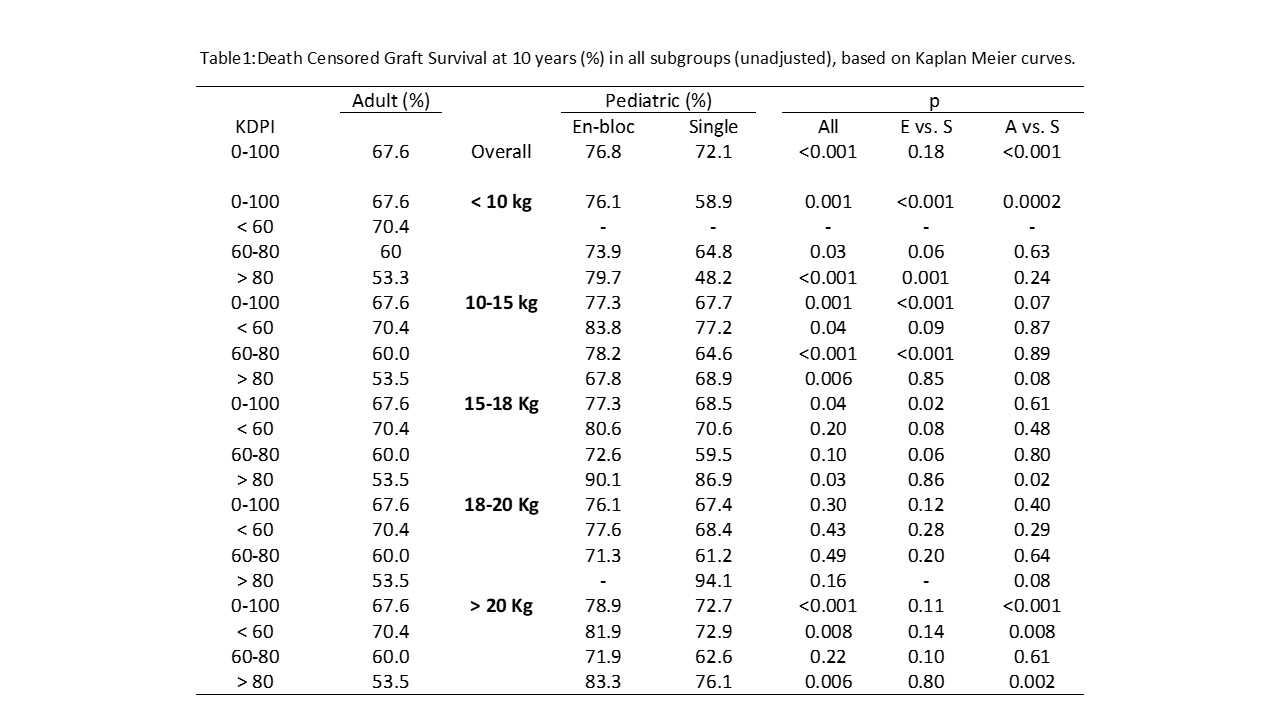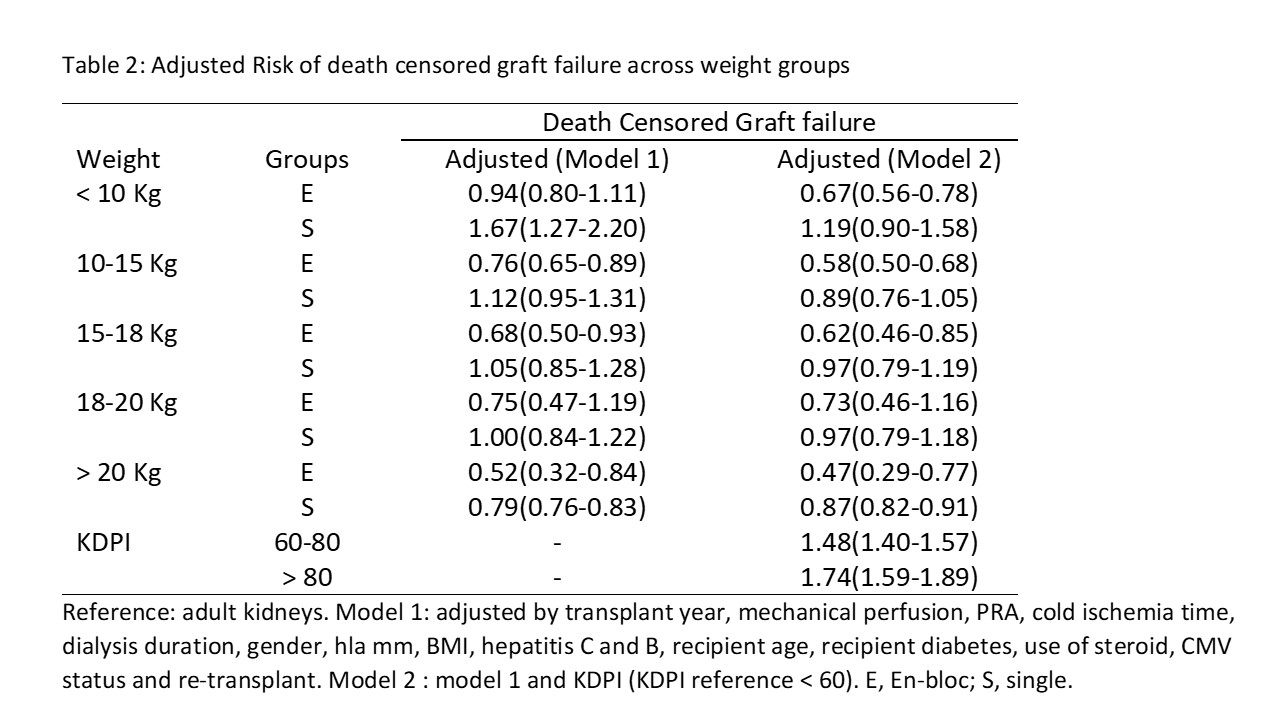Outcomes Of Single And En-bloc Pediatric Kidneys According To Kdpi
David Geffen Sch of Med at UCLA, Los Angeles, CA
Meeting: 2019 American Transplant Congress
Abstract number: 416
Keywords: Allocation, Graft survival, Kidney transplantation
Session Information
Session Name: Concurrent Session: Kidney Complications: Late Graft Failure III
Session Type: Concurrent Session
Date: Tuesday, June 4, 2019
Session Time: 2:30pm-4:00pm
 Presentation Time: 3:42pm-3:54pm
Presentation Time: 3:42pm-3:54pm
Location: Veterans Auditorium
*Purpose: There is no consensus on whether a very young kidney should be used as en-bloc or single. We studied the association of KDPI in the outcomes.
*Methods: Using data from UNOS/OPTN as of 05/2018, deceased donor pediatric transplants from 2000-18 were stratified into en-bloc (E, n=2,691) and single (S, n=20,219) kidney (excluded DCD and foreign donors). An adult donor (A, n=32,212) cohort, including the ones in the percentile 25-75% of age and weight was created. Ten-years death censored graft survival (DCGS) were compared in E, S and A cohorts. A sub-analysis stratified E and S by weight (<10, 10-15, 15-18, and > 20 kg) and KDPI (<60, 60-80, > 80%). Survival analysis and Cox regression were used to examine the outcomes.
*Results: Baseline demographics and transplant characteristics varied between groups. Overall 10-year DCGS is shown in table 1. In overall population, E and S performed better than A. Stratified by weight (KDPI 0-100), in donors < 10 kg, DCGS in S was inferior to A and E. In weight 10-15 and 15-18, S was inferior to E, but compared to A. When stratified by KDPI, S DCGS was compared to E in weight < 10 and KDPI 60-80 and > 80, all KDPI ranges in weights 10-15, 15-18, and 18-20. In the weight >20, S DCGS was superior to A, mainly in those with KDI > 80. In table 2 the risk of DCGF was inferior in E vs. A, except in a donor weighting < 10 when it was similar. Risk of DCGF in S was superior to A with weight <10, however risk was attenuated when adjusted by KDPI.
*Conclusions: In conclusion, overall pediatric en-bloc had superior survival than adult and single. In donors weight < 10Kg, en-bloc transplants were superior to single pediatric, and single pediatric survival was comparable to adult kidneys if the KDPI > 60. In donors weighting 10-20kg, single pediatric performed as well as adults, including adjusted by KDPI. Over 20Kg, singles pediatric were superior to adult donors, mainly in those with KDPI > 80%.
To cite this abstract in AMA style:
Sampaio M, Lum E, Gritsch A, Bunnapradist S. Outcomes Of Single And En-bloc Pediatric Kidneys According To Kdpi [abstract]. Am J Transplant. 2019; 19 (suppl 3). https://atcmeetingabstracts.com/abstract/outcomes-of-single-and-en-bloc-pediatric-kidneys-according-to-kdpi/. Accessed December 22, 2025.« Back to 2019 American Transplant Congress


